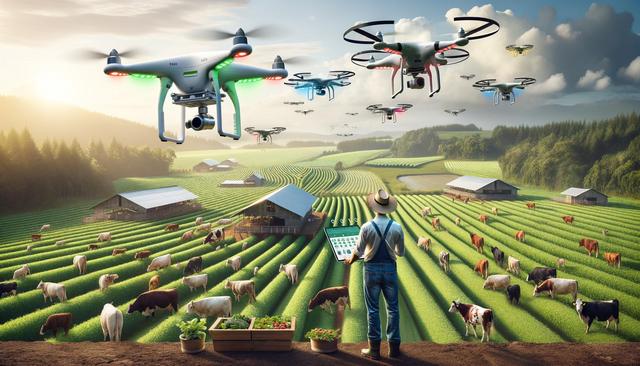Enhancing Herd Health Through Digital Monitoring
One of the most significant advantages of Livestock Management Software: Smarter Farming with Digital Tools is its ability to track and monitor the health of individual animals and entire herds. By collecting data on vital signs, movement, and behavior, farmers can detect early signs of illness or stress, allowing for timely intervention. This proactive approach helps reduce the spread of disease and decreases the need for emergency treatments, ultimately supporting animal welfare and saving costs.
Farmers can set alerts for unusual behavior patterns or declining health indicators, such as:
- Reduced feed intake
- Decreased mobility or activity
- Changes in body temperature
These data points are analyzed in real time, providing insights that would be difficult to obtain through manual observation alone. Livestock Management Software: Smarter Farming with Digital Tools thus becomes a vital tool for maintaining healthy herds and supporting veterinary decision-making.
Optimizing Feeding Strategies and Nutrition
Feeding represents a significant portion of livestock production costs, and optimizing it is crucial for both animal performance and farm profitability. Livestock Management Software: Smarter Farming with Digital Tools offers farmers the ability to design and adjust feeding programs based on the specific nutritional needs of different groups or even individual animals. By integrating data from feed intake records, growth rates, and production outputs, farmers can tailor diets to maximize efficiency.
With digital tools, farmers can:
- Track daily feed usage and waste
- Adjust rations based on animal age, weight, or production stage
- Monitor the impact of dietary changes on health and performance
This level of precision helps reduce overfeeding or underfeeding, improving outcomes while reducing feed costs. Over time, these adjustments can lead to measurable improvements in growth rates, milk yield, or reproductive performance, depending on the livestock sector.
Boosting Productivity with Data-Driven Insights
Productivity in livestock operations depends on numerous variables, from breeding cycles to environmental conditions. Livestock Management Software: Smarter Farming with Digital Tools consolidates data from various sources to provide a comprehensive view of on-farm performance. By analyzing trends and identifying patterns, the software supports decision-making that can lead to improved productivity across the board.
Examples of productivity-enhancing features include:
- Heat detection and breeding cycle tracking
- Milk yield or weight gain monitoring
- Resource utilization analytics
These insights enable farmers to make informed decisions about breeding schedules, culling, or investment in infrastructure. The result is a more streamlined operation with fewer inefficiencies and better use of farm resources.
Improving Record-Keeping and Compliance
Accurate and up-to-date records are essential for regulatory compliance, traceability, and farm management. Livestock Management Software: Smarter Farming with Digital Tools simplifies the record-keeping process by capturing and organizing data automatically. This not only reduces the administrative burden but also ensures that records are consistent and readily accessible for audits or certification processes.
Some key record-keeping capabilities include:
- Animal identification and movement tracking
- Medication and treatment logs
- Breeding and calving records
Digital records help farmers meet legal obligations and enhance transparency in the supply chain. Moreover, having detailed historical data allows for better planning and benchmarking farm performance over time, supporting long-term sustainability and profitability.
Integrating with Other Farm Technologies
Modern livestock farms often use a range of digital technologies, from automated milking systems to environmental sensors. Livestock Management Software: Smarter Farming with Digital Tools can integrate with these systems to provide a unified platform for farm management. This interoperability allows for greater efficiency and coordination across different aspects of the operation.
Integration benefits include:
- Centralized data access and reporting
- Automated task scheduling and alerts
- Enhanced collaboration between farm staff and external advisors
By connecting various technologies, farmers gain a more complete picture of their operations and can respond more quickly to issues as they arise. This level of integration not only saves time but also supports more strategic and responsive farm management practices.
Conclusion: Supporting Smarter, More Sustainable Farming
Livestock Management Software: Smarter Farming with Digital Tools empowers farmers to make informed decisions that improve animal welfare, operational efficiency, and business performance. By leveraging data from across the farm, these tools support a proactive and integrated approach to livestock management. Whether it’s through health monitoring, feed optimization, or productivity tracking, adopting digital tools is a forward-thinking step toward more sustainable and resilient farming systems.




Leave a Reply